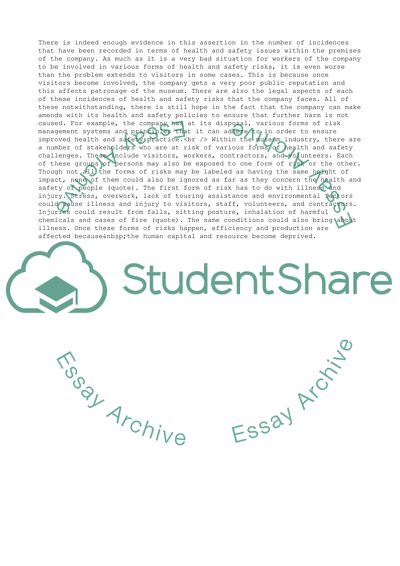Cite this document
(Management Aspects of a Museum Term Paper Example | Topics and Well Written Essays - 2316 words, n.d.)
Management Aspects of a Museum Term Paper Example | Topics and Well Written Essays - 2316 words. Retrieved from https://studentshare.org/management/1615227-art-gallery-health-and-safety-managment-report
Management Aspects of a Museum Term Paper Example | Topics and Well Written Essays - 2316 words. Retrieved from https://studentshare.org/management/1615227-art-gallery-health-and-safety-managment-report
(Management Aspects of a Museum Term Paper Example | Topics and Well Written Essays - 2316 Words)
Management Aspects of a Museum Term Paper Example | Topics and Well Written Essays - 2316 Words. https://studentshare.org/management/1615227-art-gallery-health-and-safety-managment-report.
Management Aspects of a Museum Term Paper Example | Topics and Well Written Essays - 2316 Words. https://studentshare.org/management/1615227-art-gallery-health-and-safety-managment-report.
“Management Aspects of a Museum Term Paper Example | Topics and Well Written Essays - 2316 Words”, n.d. https://studentshare.org/management/1615227-art-gallery-health-and-safety-managment-report.


